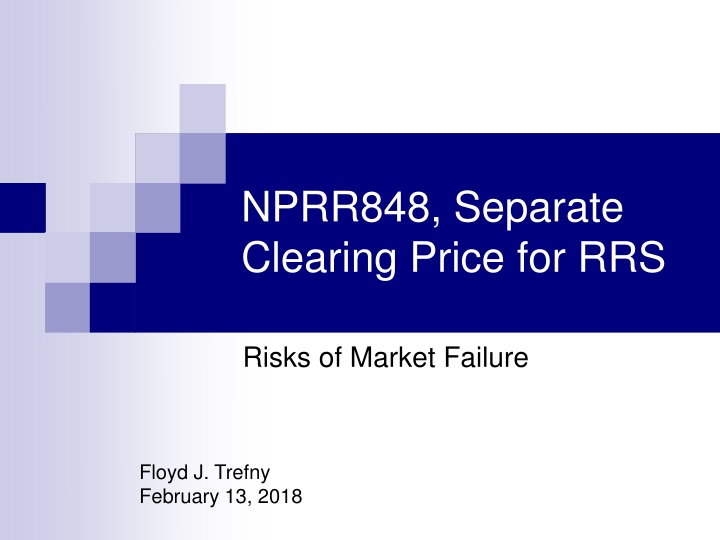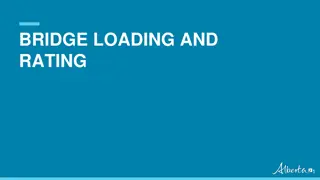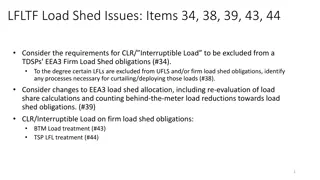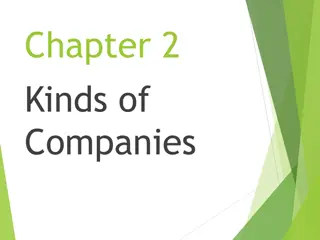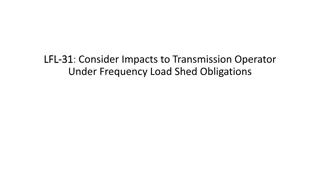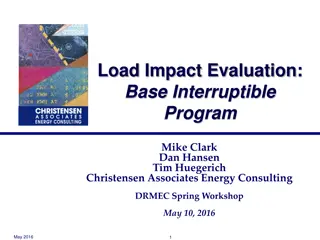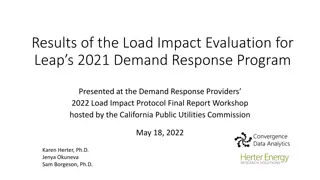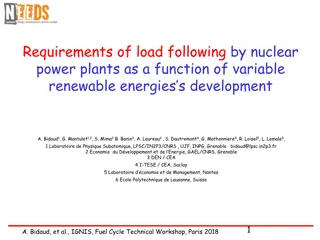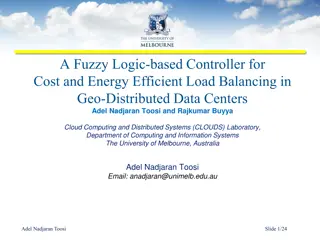Challenges Faced by Load Resource Companies in the Energy Market
Large nuclear plants built in ERCOT in the 1980s provided frequency response through Load Resources with high set relays. Today, load resource companies operate to produce end-use products like air separation gases. As the market evolves, questions arise regarding the role of load resource providers and their potential exit from the market due to changes in pricing structures and operational demands.
Download Presentation

Please find below an Image/Link to download the presentation.
The content on the website is provided AS IS for your information and personal use only. It may not be sold, licensed, or shared on other websites without obtaining consent from the author.If you encounter any issues during the download, it is possible that the publisher has removed the file from their server.
You are allowed to download the files provided on this website for personal or commercial use, subject to the condition that they are used lawfully. All files are the property of their respective owners.
The content on the website is provided AS IS for your information and personal use only. It may not be sold, licensed, or shared on other websites without obtaining consent from the author.
E N D
Presentation Transcript
NPRR848, Separate Clearing Price for RRS Risks of Market Failure Floyd J. Trefny February 13, 2018
The Historical Problem Four large nuclear generation plants were built in ERCOT in the 1980s Load Resources have been part of the ancillary services in ERCOT since then Company tariffs sold energy at greatly discounted prices to providers who had high set under frequency relays These loads provided the frequency response needed to keep from shedding firm load when two of these large plants tripped at almost the same time Minimum responsive reserve set at 2300 MWs
Today The need for Load Resources with high set relays is the same today From the ERCOT studies presented at the SIR Workshop
Operations without Load Resources Generators would have to carry the responsive reserves 20 of the 25 Scenarios studied by ERCOT would see minimum responsive reserves increase One Scenario would require a minimum of 5246 MWs be carried on generators. Over half would see minimum reserves over 3000 MWs Generators carrying this much minimum reserve and limited to 20% of HSL would be operating a very low incremental costs Market LMPs for energy would be very low Predicting hourly minimum reserve requirements would be unknown until after the DAM
Load Resource Companies Operate to produce an end use product such as air separation gases, chlorine, etc. Some REPs sell firm power to these customers with reduced prices for energy if the LR provides AS Price takers in the DAM for Responsive Reserves Self provided by the QSE These LR companies can typically interrupt their entire load at any moment Retail firm power costs more than taking power at LMP and interrupting when prices are high Many LR providers do not want to be in the electric power markets Not in their business model
Load Resource Companies - Future If being a price taker is no longer available to LRs, will they exit the DAM for AS Offers for firm retail power are difficult to price with unknowable premiums Will current LR companies choose to become LMP consumers and simply interrupt when prices are high? Can the market operate successfully with very high minimum reserves? Does this NPRR need to re-design the EEA if LRs do not show up? How do we manage only partial fulfillment of LR in Responsive?
